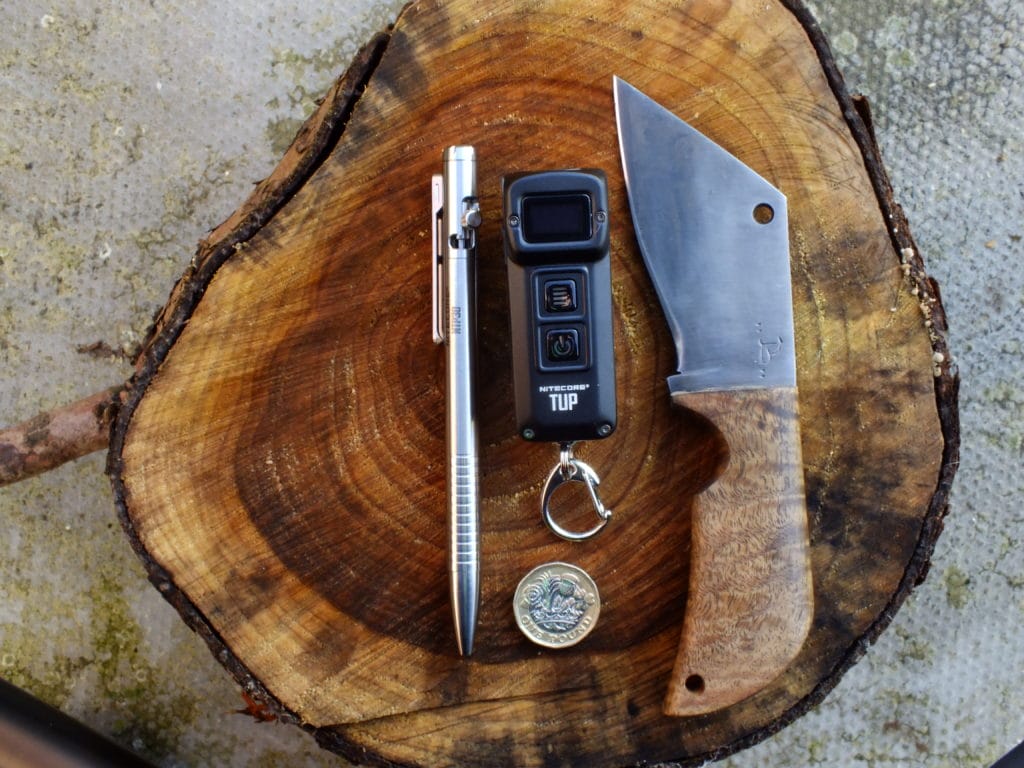The Nitecore TUP Keychain Flashlight is Nitecore’s newest keychain light. It is revolutionary, as it is the first keychain light that I am aware of that can emit 1,000 lumens. However, is it worth the money? In my review, I will be going over all of the features in detail so that you may decide for yourself.
First Impressions.

I was sent this light a while ago, but I am only getting around to testing it now. It hadn’t been officially announced yet, so the TUP arrived with its accessories but without its box and packaging. In the box, you get:
- Metal keychain clasp
- Instruction manual
- Warranty card
- Nitecore TUP keychain light
I was very impressed with the overall build. Compact and light, yet it felt sturdy in the hand. Constructed from anodized aircraft grade aluminium, the TUP boasts an impact resistance up to one metre. Let’s have a more technical look at the Nitecore TUP and see what it has to offer!
Features of the Nitecore TUP Keychain Flashlight.

The TUP is the first keychain light that Nitecore have created that features an Organic Light Emitting Diode (OLED) display screen. It has various functions, as the screen shows you the battery level and voltage, user mode, remaining run time and brightness level. To protect the screen from being scratched while in transit, it comes with a layer of plastic that can be peeled off.
The Clip.
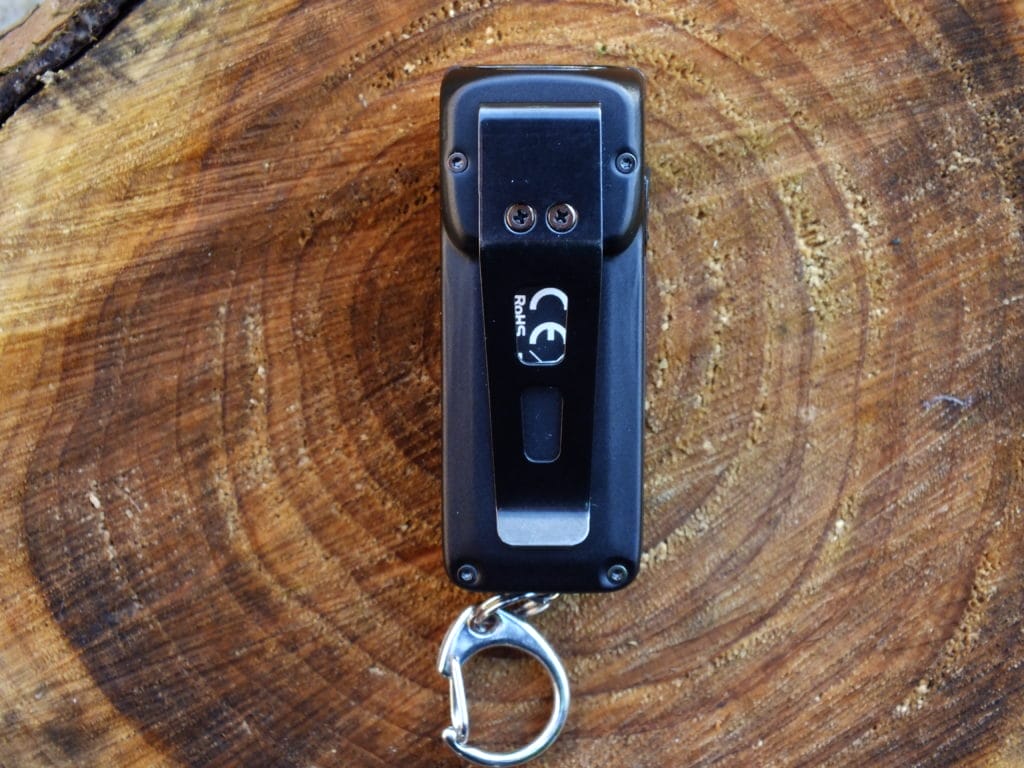
A stainless steel clip allows you to carry the TUP face up. You can also attach it to a baseball cap in a similar way to the TIP’s clip. This effectively turns the keychain light into a hands-free head light. I found myself using the TUP in this way not that long ago. The metal clip has been heat treated, as it is nice and springy, allowing you to bend it without fear of damaging it (to a certain extent, of course).

The TUP is held together with eight small torx screws, with the clip being attached via two small Philips screws. While it can be disassembled, it is not recommended, as it will void the warranty.
The Build.
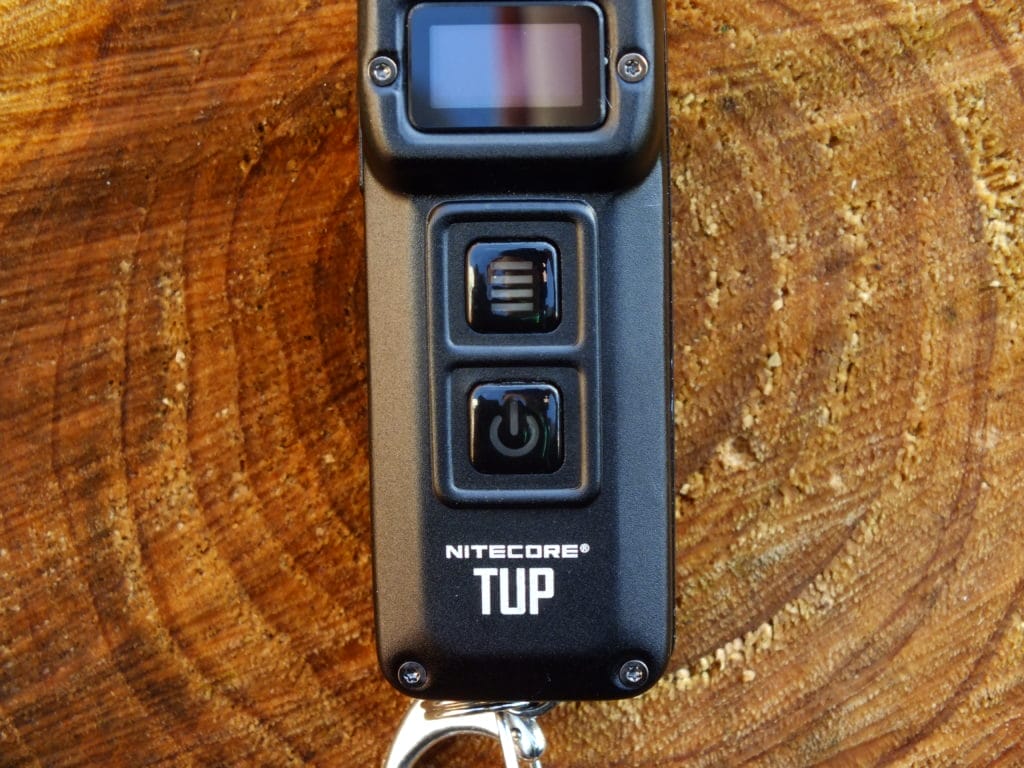
The TUP is similar to the design of the TINI and the TIP, in respect to the switches. The switch directly below the OLED screen is the “mode” switch. Once the TUP has been turned on, tap it to cycle through levels 1 – 4 (ultralow, low, mid and high). If the TUP is off, tap the mode switch to display information such as the remaining battery voltage, the user mode (“daily” or “demo” mode) and also the light setting you last used. Thanks to the memory function, you can quickly access the mode you used last. The one below the mode switch is the power one. It serves two purposes: turning the TUP on and off (obviously) and also locking the TUP. I’ll cover this later on.
TUP Output Modes.
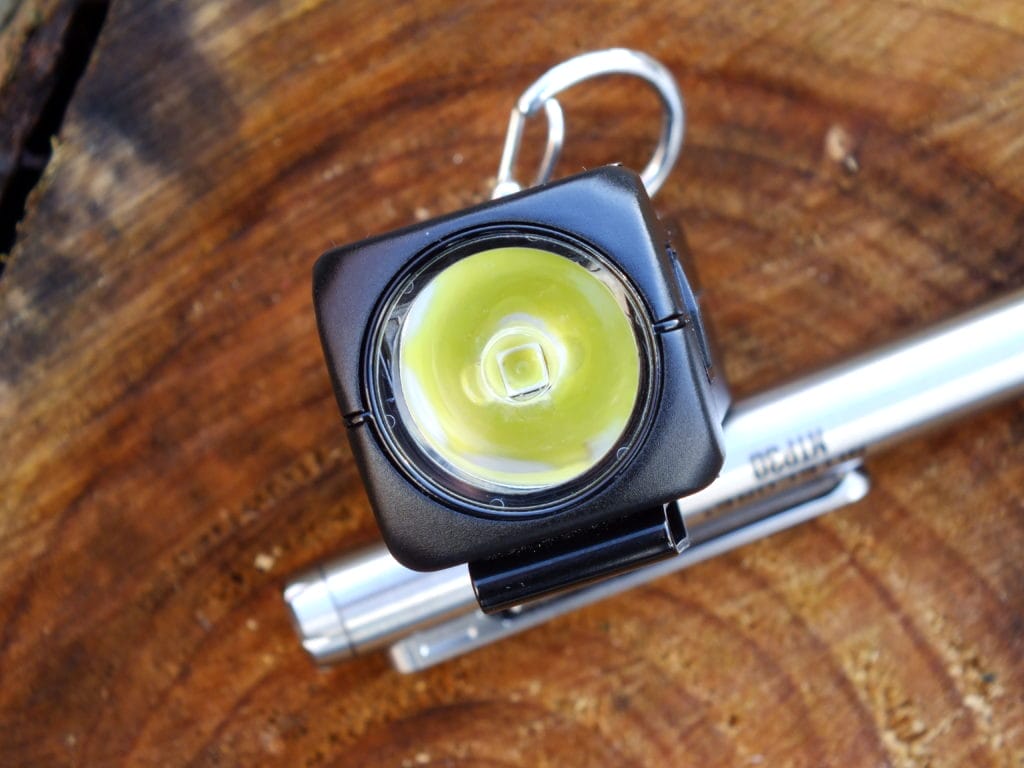
As I previously mentioned, the TUP has four levels of brightness that you can cycle through. Turbo can be accessed through holding in the mode switch. Here is a table containing the brightness levels and some other information:
| FL1 Standard | Ultralow (level 1) | Low (level 2) | Mid (level 3) | High (level 4) | Turbo |
| Brightness (lumens) | 1 | 15 | 65 | 200 | 1,000 |
| Run time | 70 hours | 19 hours | 9 hours 45 minutes | 3 hours | 15 minutes |
| Beam throw (metres) | 7 | 22 | 46 | 75 | 180 |
| Intensity (candelas) | 12 | 130 | 530 | 1,425 | 8,130 |
The TUP utilizes a perfectly-centred CREE XP-L High Density V6 LED, which allows it to emit a maximum of 1,000 lumens. Nitecore have chosen to use a smooth aluminium reflector, giving the TUP a maximum throw of 180 metres and a maximum intensity of 8,130 candelas. The beam profile is soft and uniform, thanks to the total reflective lens. A 1,200mAh integrated lithium ion battery powers the TUP. It is micro-USB rechargeable via the charging port. Thanks to an IP54 rating, the TUP is protected against dust ingress and also from water spray from any direction, making the TUP a perfect EDC backup light, as you won’t have to worry about the rain damaging your new light.
Locking and Unlocking the TUP.
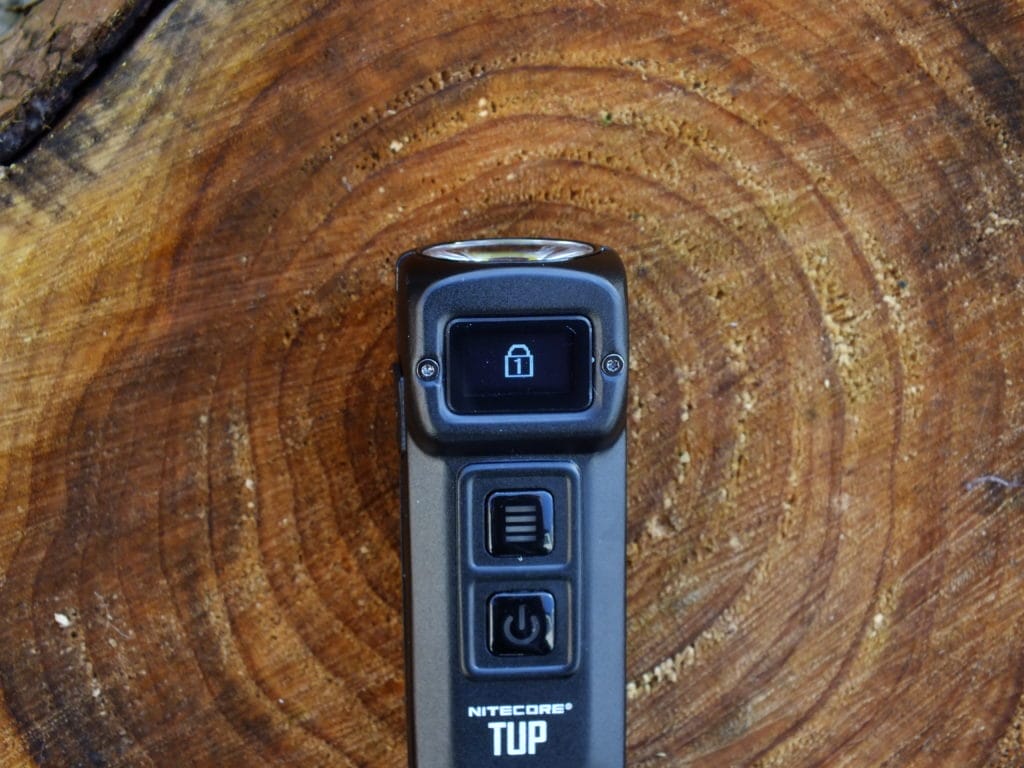
This is a particularly useful feature that the TUP has to offer – the ability to prevent the light from turning on through accidental activation. To lock the TUP, simply hold in the power switch until a little padlock appears on the OLED screen. There are actually lockout modes. When you hold in the power switch, a padlock with a “1” in the centre will be displayed. However, if you continue to hold it in, the padlock will then display a “2”. The first allows only the turbo mode to be accessed (via holding in the mode switch). The second prevents you from accessing any modes – the device is completely locked (recommended for long hikes or other activities where the TUP will be kept in storage, for example in a bag).

Unlocking the flashlight is simple: double tap the power switch and hold it in. A key will be displayed on the screen with a little progress bar underneath the key. Simply wait for it to fill up (approximately 1 second).

Dealing with Temperature.
When making a compact, powerful light, there is always one obstacle: heat. Like many of Nitecore’s lights, the TUP has an integrated ATR (advanced temperature regulation) module. This regulates the output (stepping it down if the system detects that the TUP is getting too warm), which protects and prolongs the delicate electronics.
The Two Modes.
The TUP has two user modes: “daily mode” and “demo mode”. These are accessed by holding in the mode and power switches. Daily mode allows you to operate the light without it automatically turning off – you have to manually turn it off. However, if you are using demo mode, after 30 seconds without any operation the TUP will automatically turn off – useful if you have a tendency to leave things on by accident. I personally prefer the daily mode, as I use my light every day.
Built-In Power Indicator.

Short pressing the mode switch when the TUP is off will display the remaining battery level, battery voltage, memorized brightness and current user mode. The different voltages represent the remaining battery level (a reading 4.2V means that the TUP is fully charged, whereas a reading of 3.5V means that you should charge the battery as soon as possible). The OLED screen also acts as a charging indicator, allowing you to charge it while monitoring its progress.
Improvements and Suggestions.
Overall, I’m very pleased with the TUP. However, I have a few suggestions which I believe would improve the keychain light. For example, the keychain light currently comes in two colours: black or grey. More colours or metals (for example copper) would make it much more attractive to a wider audience. Another suggestion would be to make the TUP more water-resistant (an IPX-8 rating, perhaps). Finally, a few special modes would be good, for example strobe or S.O.S.
Night Shots.
Here are some night shots I took.
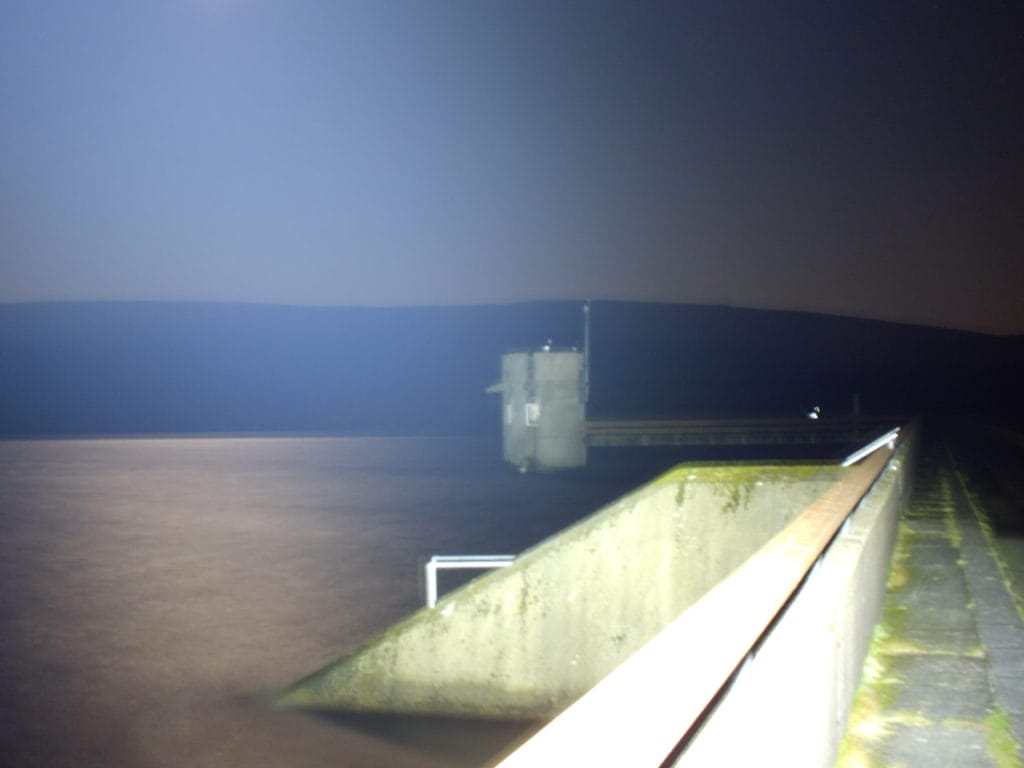

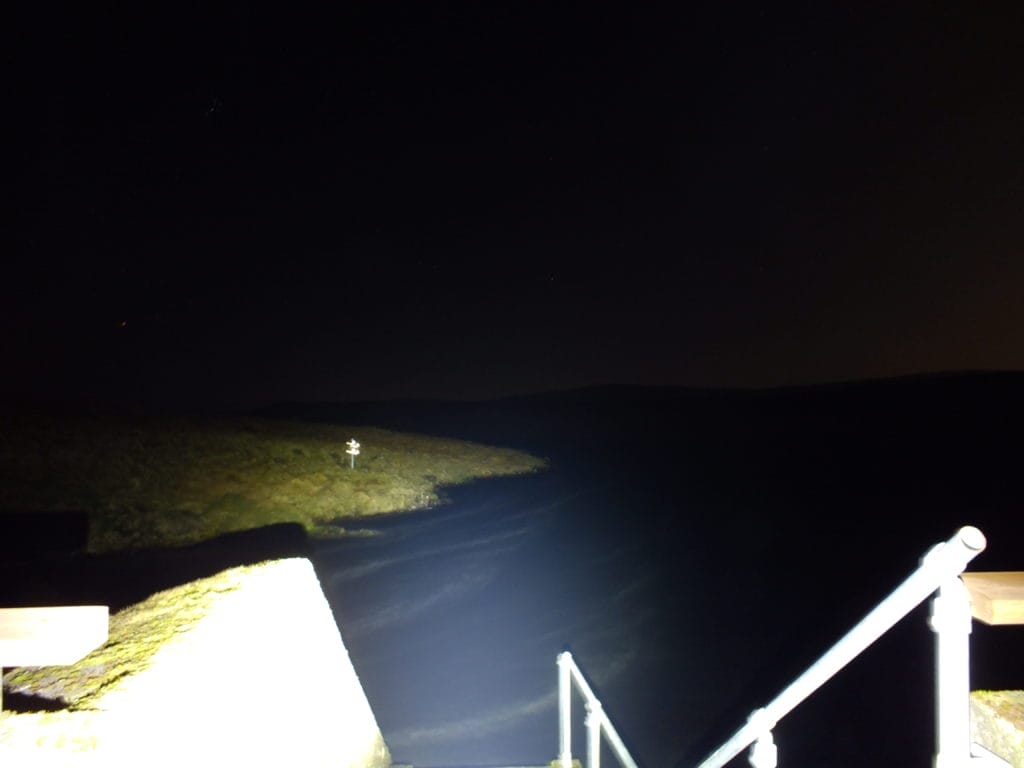
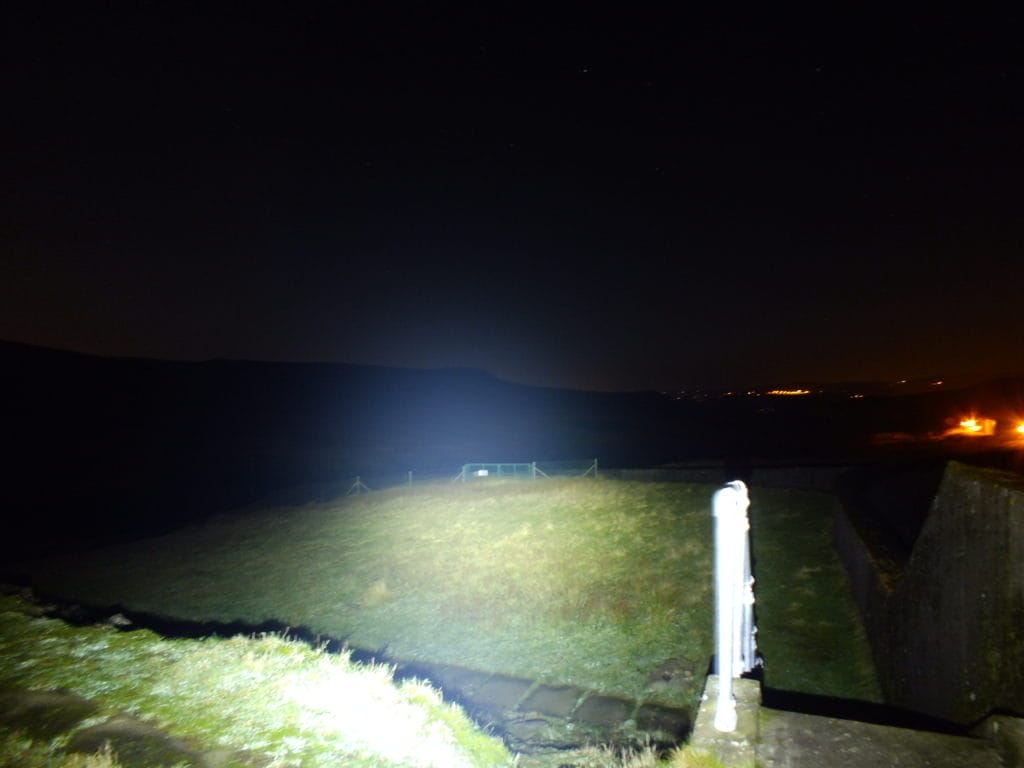
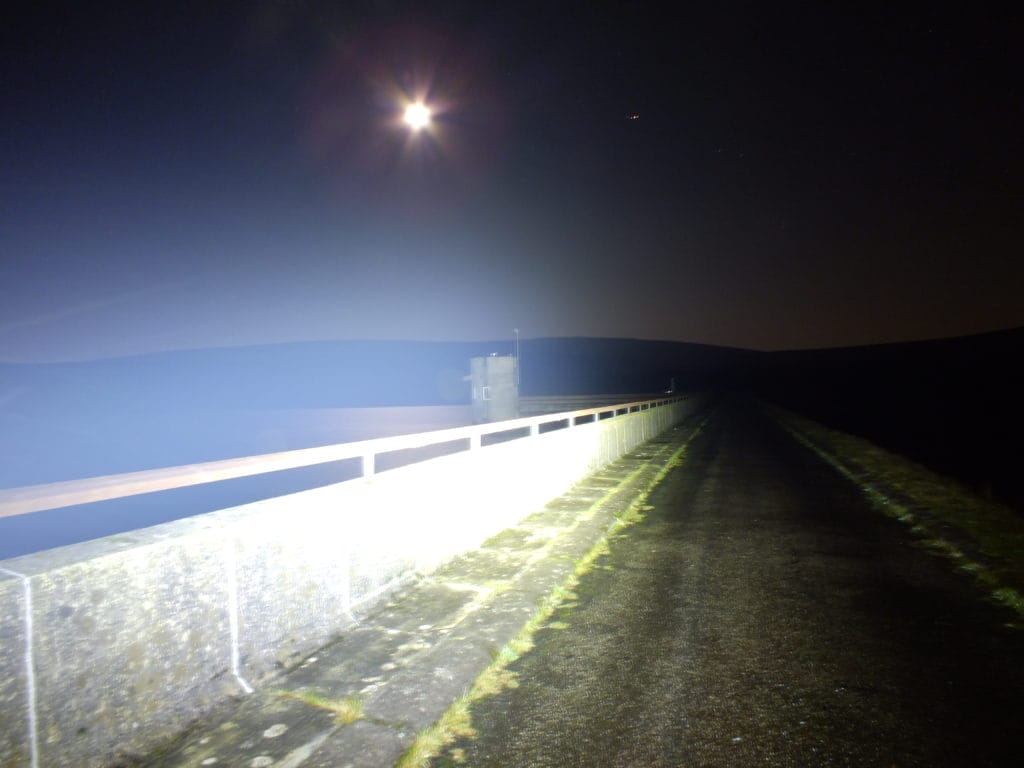
If you want the Nitecore TUP Keychain Flashlight for yourself, it’s available for purchase only on Amazon and on the Nitecore website. The RRP for this product is £55.45..
Product sample provided by Nitecore in exchange for a detailed, unbiased review.
Thank you for taking the time to read my post. If you’d like to add a comment or thought on this post, please use the section below. I can also be contacted via the online contact form. Please subscribe for the latest reviews, news, and discounts. Please follow My Helpful Hints on Twitter, Instagram & Facebook too!

